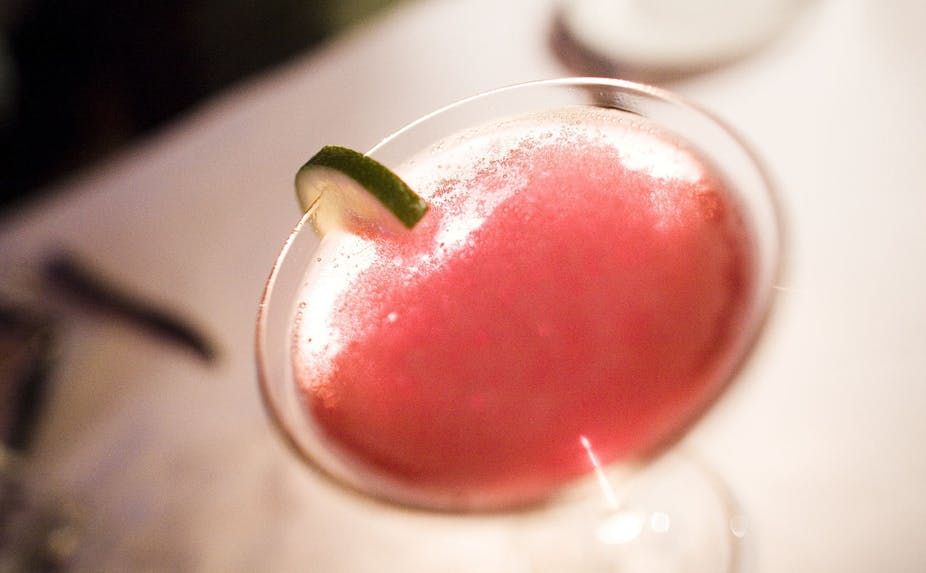The United States is on the verge of having powdered alcohol – in packets like Kool-aid but with the punch of a rum or vodka cocktail – on sale across the country. After much confusion, Palcohol, which has seven flavours including Cosmopolitan and “Powderita” is on hold over problems with its labelling.
There is a lot we don’t know about this form of alcohol (although a version was patented as far back as 1964), but we know enough about how many young people might receive it and the troubles that are likely to come from putting this kind of product on the market. The makers of Palcohol have defended claims that their product could be used as a sneaky way of avoiding high drinks prices in venues and that the idea came as a neat way of avoiding carrying booze after a day of physical activities. In reality, it could be used in all sorts of ways.
What we do know is that powdered alcohol will probably be particularly appealing to young people, judging from their demonstrated preference for flavoured alcohol (take alcopops for example), and alcoholic jello. Many adults never imagined that alcoholic jello would take off among youth, but we know from recent research that these are not only popular, but also most popular among the kids who drink the most. Powdered alcohol is also easily concealable, which will make it more feasible for people who are underage to get hold of, travel with and consume, in both liquid and food form.
Palcohol’s makers appear to have been caught off guard after the Alcohol Tobacco Tax and Trade Bureau (TTB) announced approval for the product. They hastily changed marketing for their product. Their website had suggested mixing it with guacamole (for “kamikaze guacamole”), salad or other foods as part of their plans to market the product while pointing out that this does not add flavor to the dish, just alcohol.
What’s an average mixed drink?
The producers of Palcohol suggest adding five ounces of liquid to make “one average mixed drink”. It isn’t too big a leap to suggest that drinkers will experiment with adding less liquid and using multiple packets to strengthen the effects – something you can’t do with a regular bottle of drink.
When it comes to alcohol consumption in its traditional liquid form there can be a narrow margin of safety before brain stem functions like breathing, heartbeat rhythm and the gagging reflex begin to shut down when large amounts are consumed over a short space of time, as the fallout from the Neknomination craze has shown. When drinking over a two-hour time period brain stem function may be impaired for average sized men and women respectively at approximately 13 and 10 standard drink servings of alcohol. The National Institute on Alcohol Abuse and Alcoholism defines the threshold of low risk drinking as no more than four and three drinks in any one day and 14 and seven in any one week period for men and women respectively. The possibility of consuming multiple packets could be dangerous.
Alcohol poisoning is already on the rise: hospitalisations of 18 to 24-year-olds related to alcohol overdoses in the US increased by 67% between 1999 and 2008. The hospitalisation of 26 teens aged 14 to 18 after loading up with drink before a Whiz Khalifa concert in New York shows that alcohol is already too accessible without making it available in packets that are easy to slip into a coat, a classroom or a concert. And of course, what better way to maximise the high than to add Palcohol to beverage alcohol, for at least twice the effect?
Stealth intoxication
The manufacturers have said they only promote responsible drinking, including asking people to make sure they find out whether they can take the product into venues. But we know very little about this new vehicle of alcohol delivery: is it easily detectable when added to other drinks? Could it be used as another form of stealth intoxication in a manner similar to other drugs used to facilitate sexual assaults, for example? If the company suggest adding it to food but say it doesn’t affect taste, does this up the chances of some unsuspecting person consuming it?
Experience in multiple countries with alcopops has shown this type of product and marketing attracts young people at earlier ages, putting them at higher risk for addiction and other negative consequences than those who wait until they are older to drink.
In the US, regulation falls between a number of entities but the Treasury Department’s Alcohol Tobacco Tax and Trade Bureau (TTB) has the most power to regulate alcohol and control decisions through labelling and alcohol taxes. It is the agency that recently gave and then within days and without public explanation withdrew labelling approval for Palcohol to go on the market. It is also possible that the Food and Drug Administration could prevent Palcohol from going to market based on claims that it could be considered a food product or food additive. Given that Palcohol has never before been consumed or sold to the US public at large, it is unlikely the FDA would have considered it to be generally regarded as safe, the FDA’s standard for food safety.
The new, the cool, the tongue-in-cheek all appeal to younger people. Alcoholic powder would likely attract a similarly youthful and risk-taking customer base as did alcoholic jello, and the result might just be more drinking, more addiction, injuries and other adverse consequences to the drinkers as well as the people around them.

